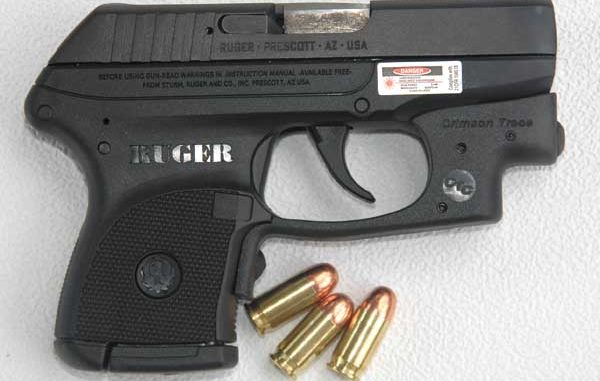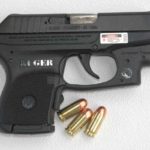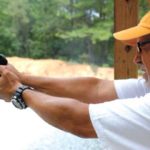
Recent aerial surveys show there are some spots in Plaquemines Parish that still hold duck food.
There are many ways to determine you have arrived.
As a politician or public person, to have a building, street or airport named after you is evidence you reached a high status, and if such occurs while you are still living — well, you’ve really made some sort of mark.
But all such vanity is fleeting, and unless you’ve graced the halls of Congress, the Supreme Court or the White House, you’re still small potatoes on the national scene.
I mean, yeah, everyone sees your name on that street sign. But how many people who read it really know who you are.
Now, if you are a gun, there is a much more definitive way to determine you’ve arrived, a way to tell you are on the lips, hearts and minds of most of the shooters of the free world.
And you are probably deep-seated in the psyche of gun lovers in places where to exhibit such enthusiasm would be grounds for long-term imprisonment.
The way to tell a gun has arrived is when Crimson Trace makes a Laser Grip for it.
The engineers at Crimson Trace Corporation have to have the constitutions and reflexes of western jackrabbits to stay ahead of the curve on all the new handguns introduced every year — and not all guns get specially designed grips that shoot a laser beam down their point of aim.
But if a handgun is brought to the marketplace and strikes a chord with the gun-buying public, rest assured Crimson Trace is going to figure out some way to put a laser-sighting device on it.
One new gun that was almost a foregone candidate for laser sights before it even hit the market was Ruger’s new LCP, or Lightweight Compact Pistol.
When the gun was introduced at the SHOT (Shooting, Hunting, and Outdoor Trades) show, the entire planned production run for the year was sold out before the gun was ever available to retailers. Yes, 90,000 is an incredible first order for anything.
At the 2008 National Rifle Association Convention in Louisville, Ky., in May, I saw Randall Pence, national sales manager for Ruger, standing in the company display with an LCP that managed to stay in his hand mere seconds before being handed, one-after-the-other, to fascinated gun nuts who wanted to palm, handle, feel and dry-fire this diminutive powerhouse. As fast as it was handed back, another person would snatch it out of Pence’s hands and examine the gun with expressions of fascination that a pistol could be that small and still carry seven rounds of .380 Auto in its innards.
The LCP has struck a responsive chord in the gun-buying public because it answers a need, and it has a reasonable price attached to it — two attributes famously associated with just about everything that ever came out of the factories of Bill Ruger.
The need is for a small, lightweight defensive pistol with enough gumption to be truthfully called “defensive.”
Such is decisively answered with the caliber — .380 Auto, or as it is known to Europeans, 9mm Kurz (Short). This is the ground floor caliber most experts consider adequate for personal defense. And there is a wellspring of types of bullets in this caliber to choose for self-defense.
The second attribute is addressed with a suggested retail price of $330. Now that the crunch is over, and retailers are actually able to lay some of these little rattlesnakes in their display cases, prices fluctuate in the $250-$300 range — a heck of a great price to pay for a pocket pistol that will slip into a jeans pocket, a small foldover wallet, a formal lady’s clutch for that very dressy occasion or tuck into a little clip holster for inside-the-belt carry.
With a 2.75-inch barrel, 9.4-ounce weight, overall length of 5.16 inches and an overall height of 3.6 inches, the LCP redefines the meaning of “subcompact” with a profile by which all others will now be measured.
Oh, did I mention, it is only .82 inches wide?
A few years back, standing around with other firearms instructors for my agency, one of them pulled out a little single-action North American Arms .22 revolver.
These thumb-sized revolvers were all the rage years ago, and even were incorporated into belt buckles where they looked ornamental, but could be popped out in stressful times. Such an ornament earned one brain surgeon a trip to our local hospitality suite when we walked him out of a bar, and I noticed his buckle. His protestations it was only a buckle insulted my intelligence, and he caught a charge for carrying a firearm into a barroom.
But I digress. When the instructor pulled his out to show everyone, I, among others, sneered mightily about “mouse guns.”
Raising one finger like a kindly professor instructing eager but ignorant acolytes, he intoned: “It only has to hold them off long enough for me to get to the truck. If I get to the truck, I win.”
With the little LCP powerhouse, you don’t have to worry about getting to the truck — you can hold them off with six rounds of .380 in the magazine and one in the chamber.
And now, Crimson Trace has assured the LCP of iconic status by designing an innovative laser sight that clips on the front of the trigger guard, altering the outline of the gun only slightly, and adding practically nothing to its weight.
Using the laser sight and a slow measured fire, I was able to drop three 8-inch plates in six shots with the LCP at 20 feet. With an 8-pound, safety-conscious trigger pull, I was plenty proud of the accomplishment.
I’ve shot the LCP on several different occasions. As with all things Ruger, I have found it to be well-designed, comparatively inexpensive and utterly, absolutely dependable — a subcompact by which all others will be compared.
Gordon Hutchinson’s newest book, written with Todd Masson, is The Great New Orleans Gun Grab, a searing expose’ of the scandal of gun confiscations in New Orleans in the aftermath of Hurricane Katrina. It is available online at www.neworleansgungrab.com. Hutchinson’s first book, The Quest and the Quarry, is a generational tale of a line of trophy bucks, and the youth of a farming family that hunts them. It is available online at www.thequestandthequarry.com.
Both books have been chosen Outdoor Books of the Year by the Southeastern Outdoor Press Association, and are available from the publisher by calling (800) 538-4355.




